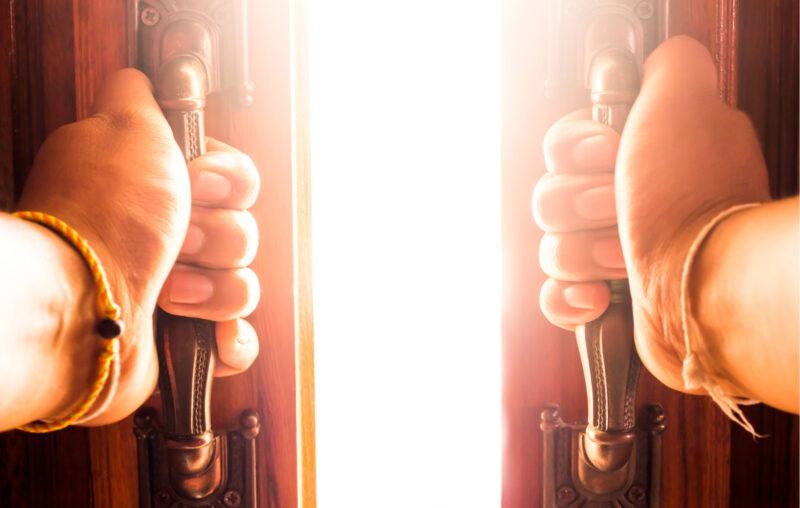
Coffee shops in Knoxville, Tennessee, are a microcosm of the world’s reaction to Covid-19. A Starbucks here features a drive-through stacked several cars deep, hour after hour. Most of the people waiting patiently in their cars wear masks. Inside, the shop is nearly deserted. As soon as I enter, the barista tells me to pull my mask up over my nose and to stay six feet away. I am the only indoor customer. I can’t tell if the barista or any of the other employees are smiling, but their eyes make me doubt it. It is eerily quiet.
Across the street, the Panera doesn’t have a drive-through, but it does offer curbside service and carryout. Inside, the place is about half-full — the limit for indoor dining at the time. Most people in line for service wear their masks properly, but a few have them pulled down, exposing their noses. Most people stay a few feet away from the others, but several couples stand side-by-side. No one seated at a table is wearing a mask. As soon as a table opens, an employee swoops in to spray it with antiviral cleaners and to wipe it clean. Within minutes, the table is occupied again. Conversation and laughter fill the shop. Some customers pull down their masks so that the baristas can hear their order. Neither the masked baristas nor the customers ever complain.
One coffee shop clearly takes safety much more seriously than the other, enforcing official sanitary protocols and chastising customers who are less than rigorous. The other takes reasonable precautions, but allows customers to take liberties with official safety protocols.
What’s going on? What’s wrong with this picture?
What’s going on is that markets continue to function despite government restrictions, and nothing is wrong with it.
Commerce thrives by following consumer preferences and behavior, and consumers exhibit a wide range of responses to Covid-19. Some people essentially ignore it, openly flout sanitary requirements, or even view it as a conspiracy. At the other extreme, people suffer irrational fear bordering on paranoia.
My favorite example occurred while cruising a freeway at 75 miles per hour. I noticed a blue Honda Accord in my rear-view mirror, driving erratically. The Accord narrowly missed cars as it cut in front of them, careened across two lanes of traffic, and blew past me at about 90 miles per hour. The driver cut in front of me, missing by just a few feet as it lurched back to its original lane and vanished into the other traffic. The reckless driver, alone in his car, was wearing a mask.
Absent government restrictions, we would surely observe coffee shops catering to all of these groups. Some would operate with fewer or even no extra safety procedures. They may not require masks at all, or they may operate at full capacity. Customers who take Covid-19 lightly would prefer this more relaxed atmosphere. If too few people are comfortable with this level of safety, then the shop would have to institute more stringent sanitization procedures, or else the lack of customers would force it out of business.
As of this writing, within most jurisdictions, operating with such normal safety protocols is banned. Consumers have fewer options. Even so, market forces continue to work. Within the constraints of the health requirements, businesses set their own policies, giving consumers more options. They patronize the places that fit their needs. People who are cautious use the drive-through at Starbucks. People who want a place to “gather, as a community, to share great coffee and deepen human connection” choose Panera.
Customers decide for themselves, weighing their perceptions of greater risk against the greater happiness they will have. Forcing all businesses to allow indoor dining would deprive people who strongly value safety of a place to get coffee in what they consider to be a sufficiently secure environment. Forcing everyone to adhere to the Starbucks approach, though, would eliminate a source of pleasure for people who want to meet friends, tutor students in a comfortable, public place, or just get out of the house for a while.
They may even feel that avoiding a drive-through line serves a higher purpose: why sit in line, burning petroleum-based fuel, and emitting carbon, when another shop right across the street lets you shut off the engine and enjoy your coffee inside?
True, these people may run a slightly higher risk of catching a nasty bug, but we allow people to choose much greater risks in other areas of life. Some drive huge SUVs with the latest safety features to their safe office jobs. Some ride motorcycles to their dangerous construction sites.
Offering different dining arrangements also allows needed flexibility for the increasing number of people who have already recovered from infection and have protective antibodies. Additionally, the New York Times reports that the United States has administered 30 vaccination injections per 100 people.
Because full vaccination sometimes requires two injections, the percentage of people fully vaccinated is lower, but the number of people with at least partial protection is likely in the high teens, or even higher. Whatever the number is, it is rising rapidly.
Allowing vaccinated people the opportunity to return to a freer lifestyle has an added society benefit: It surely will increase vaccination acceptance rates. The alternative — forcing vaccinated people to continue to adhere to the strictest sanitary protocols — would surely reduce the number of people willing to be vaccinated.
What’s wrong with allowing businesses to choose their approach to customer safety, and customers to choose which business they patronize? Nothing. Nothing at all.


0 Comments